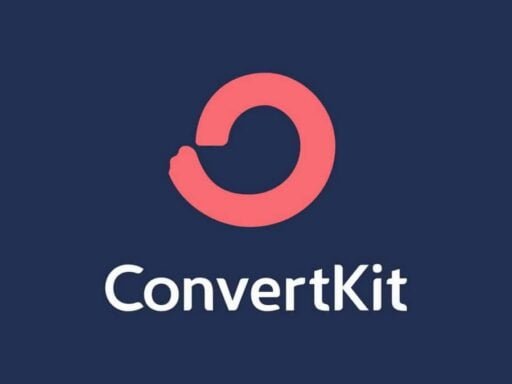Welcome to AWeber, your go-to email marketing software designed to help small businesses and beginners in email marketing succeed. With our powerful tools and features, we make it easy for you to create and run successful and profitable email campaigns.
At AWeber, we understand the importance of delivering your messages to your audience. Our platform provides you with the tools you need to ensure your emails are delivered to your subscribers’ inboxes, increasing your chances of reaching and engaging with them.
But it doesn’t stop there. We also know that it’s not just about getting your emails delivered; it’s about getting them opened and getting results. With AWeber, you can create eye-catching email templates, craft engaging content, and automate your email campaigns for different triggers, ensuring that your subscribers not only open your emails but also take the desired action.
We offer powerful segmentation features to help you create targeted campaigns, reaching the right audience with the right message. And with AWeber’s integration with MillionVerifier, you can verify and clean your email lists, improving deliverability and avoiding wasting your resources on invalid contacts.
Ready to take your email marketing to the next level? Join AWeber today and start experiencing email marketing that gets delivered, gets opened, and gets results.
Key Takeaways:
- AWeber is an email marketing software designed for small businesses and beginners in email marketing.
- AWeber offers a range of tools and features to create successful and profitable campaigns.
- You can choose from a variety of email templates, create engaging content with a drag-and-drop tool, automate emails for different triggers, segment contacts based on various criteria, and analyze the performance of your campaigns.
- AWeber integrates with MillionVerifier for email list verification and cleaning.
- By using AWeber, you can ensure your emails get delivered, get opened, and get results.
Email Marketing Tools of AWeber
When it comes to email marketing, AWeber provides a comprehensive set of tools designed to enhance your campaigns and drive results. With a wide range of features and functionalities, AWeber empowers you to create engaging emails that resonate with your audience. Here’s a closer look at the key email marketing tools offered by AWeber:
Email Templates
AWeber offers a vast selection of professionally designed email templates that you can easily customize to match your brand and campaign goals. Whether you’re looking for a sleek and modern design or a more traditional layout, AWeber’s template library has got you covered.
Drag-and-Drop Content Creation
Creating compelling and visually appealing email content has never been easier with AWeber’s drag-and-drop editor. Simply choose the elements you want to include in your emails, rearrange them to your liking, and customize them to align with your brand identity.
Automation Features
AWeber’s automation features allow you to streamline your email marketing efforts and deliver personalized messages at scale. From welcome messages to abandoned cart alerts, AWeber automations let you engage with your subscribers based on their behavior and triggers.
Contact Segmentation
Segmenting your email list is crucial for sending targeted and relevant messages to specific groups of subscribers. AWeber enables you to create segments based on various criteria, such as tags, opens, clicks, purchases, visits, and even location, ensuring your emails reach the right people at the right time.
Dynamic Content
Personalization is key to creating impactful email campaigns. AWeber’s dynamic content feature allows you to tailor your emails based on subscriber tags and custom fields, ensuring your messages deliver maximum relevance and value.
A/B Split Testing
To optimize the performance of your email campaigns, AWeber offers an A/B Split Test option. This powerful tool enables you to test different versions of your emails and analyze the results to identify the elements that drive higher open rates, click-through rates, and overall engagement.
| Key Features | Benefits |
|---|---|
| Email Templates | Save time and effort with professionally designed templates that you can customize to match your brand. |
| Drag-and-Drop Content Creation | Create visually appealing emails without any coding skills, thanks to the intuitive drag-and-drop editor. |
| Automation Features | Streamline your email marketing efforts by automating messages based on triggers and subscriber behavior. |
| Contact Segmentation | Send targeted and relevant messages to specific groups of subscribers, increasing engagement and conversions. |
| Dynamic Content | Deliver personalized emails that resonate with subscribers, driving higher open rates and click-through rates. |
| A/B Split Testing | Optimize your campaigns by testing different elements and identifying the strategies that yield better results. |
Importance of Email Marketing Best Practices
Following email marketing best practices is essential for achieving success. By implementing these proven strategies, you can optimize your campaigns and drive better results. Here are some key email marketing best practices that you should consider:
Create Automated Email Campaigns
Automated email campaigns allow you to send the right message to the right people at the right time. By setting up triggers and workflows, you can deliver personalized and timely content to your subscribers. Automation enables you to nurture leads, welcome new subscribers, recover abandoned carts, and much more.
Email List Segmentation
Segmenting your email list based on specific criteria helps you deliver more personalized and relevant content. By grouping subscribers with common characteristics or interests, you can tailor your messages to their needs, preferences, and behaviors. This targeted approach increases engagement and click-through rates, leading to better campaign performance and higher conversions.
Personalize Your Emails
Personalization is a powerful technique that enhances the effectiveness of your emails. By addressing subscribers by their name and using dynamic content based on their past interactions or preferences, you can create a more personalized experience. Personalized emails resonate better with recipients, leading to increased engagement, higher open rates, and improved click-through rates.
Create Engaging Content
Engaging content is the backbone of successful email marketing. Your emails should be informative, valuable, and interesting to keep subscribers interested and wanting more. Use compelling subject lines, captivating visuals, and concise but impactful copy to grab your readers’ attention. Make your emails visually appealing, scannable, and easy to digest.
Including a Clear Call to Action
A strong call to action (CTA) is crucial for driving conversions. Every email you send should have a specific goal in mind, whether it’s making a purchase, signing up for a webinar, or downloading an e-book. Make sure your CTA stands out, use action-oriented language, and provide clear instructions on what you want your subscribers to do next.
Applying Confirmed Opt-In
Confirmed opt-in, also known as double opt-in, is a best practice that ensures subscribers actively consent to receive emails from you. When subscribers confirm their email addresses after sign-up, it improves deliverability and engagement. Confirmed opt-in helps you build a high-quality email list, reduces the risk of spam complaints, and establishes a stronger sender-receiver relationship.
| Best Practice | Benefits |
|---|---|
| Create automated email campaigns | – Send timely and relevant messages – Nurture leads and recover abandoned carts |
| Email list segmentation | – Deliver personalized and relevant content – Increase engagement and click-through rates |
| Personalize your emails | – Build stronger connections with subscribers – Improve open and click-through rates |
| Create engaging content | – Keep subscribers interested and entertained – Increase email performance |
| Including a clear call to action | – Drive conversions and actions – Guide subscribers on the desired next steps |
| Applying confirmed opt-in | – Improve deliverability and engagement – Build a high-quality email list |
Best Practices for Email Marketing Success
To achieve email marketing success, it is essential to follow a set of best practices that will help you improve engagement, deliverability, and overall performance. Here are some key practices to implement:
List Cleaning: Regularly clean your email list to maintain its health and engagement levels. Remove inactive or unsubscribed contacts and stay proactive in keeping your list up-to-date.
Avoid Purchased Email Lists: Purchasing email lists may seem like a quick way to expand your reach, but it can lead to spam complaints and lower deliverability rates. Instead, focus on building your own opt-in lists through organic methods.
Avoid No-Reply Email Addresses: Using a no-reply email address can negatively impact your deliverability and customer experience. It is best to use a valid and monitored email address that encourages recipient interaction and engagement.
Test Emails Before Sending: Before sending out your email campaigns, make sure to test them thoroughly. Check for rendering issues across different devices and email clients, review for spelling mistakes, and ensure that all links and images are functional.
Analyze Email Marketing Stats: Regularly analyze your email marketing statistics to gain insights into the effectiveness of your campaigns. Pay attention to open rates, click-through rates, delivery rates, and opt-out rates. This data will help you identify areas for improvement and make data-driven decisions.
A/B Split Testing: A/B split testing allows you to test different elements of your emails, such as subject lines, content, and call to action. By testing and comparing different versions, you can optimize your email performance and achieve better results.
By implementing these best practices, you can enhance the effectiveness of your email marketing campaigns, improve engagement, and drive better results.
Reviewing Email Performance
Reviewing your email performance is crucial to understanding the effectiveness of your email marketing campaigns and making data-driven improvements. By analyzing key metrics such as open rates, click-through rates, unsubscribe rates, deliverability, traffic, sales, and revenue per email, you can gain valuable insights into the success of your email strategies.
Open Rates
Open rates indicate how many subscribers opened your emails, providing insights into the effectiveness of your subject lines and optimal send times. By analyzing open rates, you can identify trends and patterns that can inform your future email campaigns. Additionally, testing different subject lines can help optimize your open rates and increase engagement.
Click-Through Rates
Click-through rates reveal which links in your emails receive the most engagement from your subscribers. By tracking click-through rates, you can determine the type of content that resonates with your audience and drive more traffic to your website or landing page. This data allows you to refine your email content and calls to action for better results.
Unsubscribe Rates
Unsubscribe rates offer an opportunity to understand why subscribers leave your email list. By reviewing unsubscribe rates, you can identify any issues or trends that may be causing subscribers to opt out. This information allows you to make necessary improvements in your email content, frequency, and overall strategy to minimize attrition.
Deliverability
Deliverability is crucial for ensuring that your emails reach your subscribers’ inboxes. It measures the success rate of your emails being delivered without being filtered as spam. To improve deliverability, it’s important to follow best practices, adhere to the CAN-SPAM Act regulations, and maintain a good email reputation. Regularly monitoring deliverability metrics helps you identify and address any potential issues that may impact your email deliverability.
Traffic and Sales
Traffic reports show how many subscribers visit your website or landing page from your emails. This metric helps you assess the effectiveness of your email campaigns in driving traffic and increasing engagement with your brand. Sales reports track the revenue generated from your email campaigns, providing valuable insights into the financial impact of your email marketing efforts. By analyzing these data points, you can optimize your email content, calls to action, and offers to maximize conversions and revenue.
Revenue per Email
Revenue per email is a useful metric for assessing the financial impact of your email marketing efforts. It measures the average revenue generated from each email sent. By calculating revenue per email, you can determine the effectiveness of your email campaigns in driving sales and generating revenue. This metric helps you evaluate the return on investment of your email marketing activities and make informed decisions to optimize your email strategies.
Increasing Open and Click-through Rates
Increasing open rates and click-through rates is crucial for the success of your email marketing campaigns. By implementing the following strategies, you can capture the attention of your subscribers and drive them to take action.
1. Write Compelling Subject Lines
Your subject line is the first impression your subscribers will have of your email. To make it compelling, keep it concise, clear, and intriguing. Use power words, create a sense of urgency, or ask a question to pique their curiosity. Experiment with different subject line styles to see which ones resonate best with your audience.
2. Set Clear Expectations
One way to increase open rates is by setting clear expectations with your subscribers. Let them know what they can expect from your emails and how often they will receive them. When subscribers know what to anticipate, they are more likely to open and engage with your emails.
3. Personalize Your Emails
Personalized emails have a higher chance of capturing your subscribers’ attention. Use their first name in the subject line or email body to create a sense of familiarity. Tailor the content to their preferences and interests to make it more relevant and valuable. Personalization shows that you care about your subscribers as individuals, increasing the likelihood of engagement.
4. Deliver Valuable Content
Ensure that your emails provide value to your subscribers. Share informative content, exclusive offers, or helpful tips that align with their needs and interests. Valuable content builds trust and credibility, establishing you as an authority in your industry and encouraging subscribers to open future emails.
5. Create an Engaging Call to Action
Your call to action (CTA) should be visually appealing and clearly communicate the action you want subscribers to take. Use action-oriented language and make it easy for them to click through to your desired destination. Experiment with different button designs, colors, and placements to optimize click-through rates.
6. Test Different Content
Testing different content is essential for understanding what resonates best with your subscribers. Experiment with different email formats, images, headlines, or offers to see what drives the highest open and click-through rates. Analyze the results to refine your email marketing strategy and tailor your content to your subscribers’ preferences.
7. Stay on Top of Email Marketing Trends
Email marketing is constantly evolving. Stay informed about the latest trends and best practices to ensure that your campaigns remain effective. Continuously evaluate your strategy, adapt to industry changes, and explore new opportunities to engage your subscribers and improve your open and click-through rates.
| Strategy | Benefits |
|---|---|
| Compelling subject lines | Increases curiosity and open rates |
| Clear expectations | Builds trust and encourages email opens |
| Personalized emails | Creates a personal connection and boosts engagement |
| Valuable content | Establishes credibility and encourages future opens |
| Engaging CTAs | Directs subscribers to take action and improves click-through rates |
| Testing different content | Provides insights and helps optimize email performance |
| Staying on top of trends | Keeps your campaigns relevant and effective |
Improving Deliverability and List Hygiene
Improving deliverability and maintaining a clean email list are essential for the success of your email marketing campaigns. By implementing strategies to improve deliverability and keeping your email list hygiene in check, you can ensure that your emails reach the intended recipients and maximize your engagement. Here are some key practices to follow:
1. Maintain a Good Email Reputation Score
Your email reputation score is influenced by factors such as complaint rates, bounce rates, and spam folder placement. Avoid sending emails to recipients who have not opted in or have marked your emails as spam. Regularly monitor and address any issues that may impact your email reputation.
2. Adhere to CAN-SPAM Compliance
Complying with the CAN-SPAM Act is crucial to maintaining a positive email reputation. Ensure that your emails include clear identification, an option to unsubscribe, and accurate sender information. Additionally, honor unsubscribe requests promptly to avoid any negative consequences.
3. Implement Confirmed Opt-in
By implementing confirmed opt-in, also known as double opt-in, you ensure that subscribers actively choose to receive emails from you. This not only improves engagement but also reduces the risk of sending emails to invalid or uninterested recipients.
4. Regularly Remove Inactive Subscribers
Removing inactive subscribers from your email list keeps it clean and engaged. Inactive subscribers can negatively impact deliverability and open rates. Review your email analytics regularly and identify subscribers who haven’t engaged with your emails for a specific period. By removing these subscribers, you can improve overall deliverability and focus on engaging with the active ones.
By focusing on improving deliverability and maintaining list hygiene, you can optimize your email marketing campaigns and increase the effectiveness of your email communications.
Driving Traffic and Increasing Sales
To drive website traffic and increase sales, it’s essential to implement effective strategies in your email marketing campaigns. By focusing on the following key elements, you can maximize the impact of your emails and achieve your business goals.
1. Compelling Call to Action
A compelling call to action is crucial for driving website traffic. Whether it’s encouraging subscribers to make a purchase, sign up for a webinar, or download a resource, your call to action should be clear, persuasive, and visually appealing. Use action-oriented language and create a sense of urgency to motivate subscribers to take the desired action.
2. Valuable Content
Providing valuable content is essential for maintaining subscriber interest and engagement. Make sure your emails offer something of value to your audience, such as exclusive discounts, educational resources, or insider tips. By consistently delivering valuable content, you can build trust with your subscribers and establish yourself as an authority in your industry.
3. Consistent Email Sending
Consistency is key when it comes to email marketing. By establishing a regular email sending schedule, you can stay at the top of your subscribers’ minds and maintain their interest in your brand. Be mindful of frequency and avoid overwhelming your subscribers with too many emails, but also make sure you’re sending emails consistently enough to keep them engaged.
4. Targeted Messages
A one-size-fits-all approach doesn’t work well in email marketing. To drive website traffic and increase sales, it’s important to send targeted messages to specific segments of your email list. Segment your subscribers based on their interests, behaviors, or demographics, and tailor your messages accordingly. This personalized approach will resonate with your audience and make them more likely to click through to your website.
5. Link Optimization
Optimizing links in your emails is crucial for ensuring they are functional and lead to relevant content. Make sure all links are properly directed and tested before sending out your campaigns. Additionally, consider using UTM parameters to track the effectiveness of your email links and gain insights into the traffic they generate on your website.
By implementing these strategies in your email marketing campaigns, you can drive targeted website traffic and increase sales. Remember to consistently analyze your email performance, make data-driven decisions, and optimize your strategies for continued success.
| Driving Traffic and Increasing Sales | Benefits |
|---|---|
| Compelling Call to Action | Motivates subscribers to take desired action |
| Valuable Content | Builds trust and establishes authority |
| Consistent Email Sending | Keeps subscribers engaged and interested |
| Targeted Messages | Resonates with specific segments of your audience |
| Link Optimization | Ensures functional and relevant links |
Analyzing Email Marketing Stats
When it comes to email marketing, analyzing the right statistics is crucial in understanding the performance of your campaigns. By examining key metrics such as open rates, click rates, delivery rates, and opt-out rates, you can gain valuable insights into the effectiveness of your email marketing efforts.
Open Rates: Open rates measure the percentage of recipients who opened your emails. This metric can provide insights into the effectiveness of your subject lines and the overall level of subscriber engagement. By analyzing open rates, you can identify which subject lines resonate best with your audience and optimize future campaigns accordingly.
Click Rates: Click rates indicate the percentage of recipients who clicked on a link within your email. This metric helps you gauge the performance of your email content and call-to-action buttons. By analyzing click rates, you can determine which content and CTAs are most effective, allowing you to refine your messaging to encourage more clicks.
Delivery Rates: Delivery rates measure the percentage of emails that successfully reach your subscribers’ inboxes. A low delivery rate could indicate issues such as bounced emails or a poor email reputation. By analyzing delivery rates, you can identify any underlying deliverability issues and take corrective measures to ensure your emails are reaching your audience.
Opt-out Rates: Opt-out rates measure the percentage of recipients who unsubscribe from your email list after receiving a campaign. This metric provides insights into the overall satisfaction and engagement levels of your subscribers. By analyzing opt-out rates, you can identify areas for improvement in your email content, frequency, or targeting to reduce unsubscribes and retain more subscribers.
When interpreting these email marketing stats, it’s essential to consider them in the context of your specific goals and industry benchmarks. For example, a benchmark might suggest that a 20% open rate is average, but if your goal is to achieve a higher open rate, you may need to identify strategies to improve it further. By comparing your stats against benchmarks and tracking the progress over time, you can measure the effectiveness of your efforts and make data-driven decisions to optimize your email marketing strategies.
Example Email Marketing Performance Comparison
| Metrics | Campaign A | Campaign B | Campaign C |
|---|---|---|---|
| Open Rate | 25% | 30% | 15% |
| Click Rate | 10% | 8% | 12% |
| Delivery Rate | 95% | 93% | 98% |
| Opt-out Rate | 0.5% | 1% | 0.2% |
In the example table above, you can see the performance comparison of three email campaigns. Campaign A has a higher open rate, but a lower click rate compared to Campaign B. Campaign C has the highest delivery rate and the lowest opt-out rate, indicating better overall engagement. By analyzing these stats, you can identify patterns and trends to replicate successful strategies and improve upon weaker areas.
Remember, analyzing email marketing statistics is an ongoing process. Regular tracking and analysis of these metrics will provide you with the necessary insights to refine and optimize your email marketing strategies, leading to better engagement, conversions, and overall success.
A/B Split Testing for Email Optimization
A/B split testing is a valuable technique for optimizing your email campaigns and improving their overall performance. By comparing the performance of different email campaigns, you can gain valuable insights into what resonates best with your subscribers and drives them to take action.
When conducting A/B split tests, you can test various components of your emails, including:
- Subject line messages: Compare different subject lines to see which ones result in higher open rates and click-through rates.
- Content variations: Test different variations of your email content to determine which ones are more engaging and drive better response rates.
- Call to action buttons: Experiment with different call to action buttons to find out which designs and wording prompt the most clicks.
- Time of day: Test sending your emails at different times of the day to identify the optimal time for reaching your audience.
- Email length: Compare short and concise emails with longer, more detailed ones to determine which format your subscribers prefer.
- Sender identification: Test different sender names or email addresses to see if it affects open rates or engagement.
By gathering data from A/B split tests and analyzing the results, you can make data-driven decisions to optimize your email campaigns. This allows you to refine your strategies and focus on what truly resonates with your audience, resulting in better performance and higher conversion rates.
| Component | Variations | Results |
|---|---|---|
| Subject Line Messages | Variation A: Short and intriguing Variation B: Descriptive and informative | Variation A achieved a 10% higher open rate compared to Variation B. |
| Content Variations | Variation A: Bullet-point format Variation B: Paragraph format | Variation A resulted in a 15% higher click-through rate compared to Variation B. |
| Call to Action Buttons | Variation A: “Shop Now” Variation B: “Learn More” | Variation A generated a 20% higher conversion rate than Variation B. |
| Time of Day | Variation A: Morning (9 AM) Variation B: Afternoon (3 PM) | Variation A resulted in a 12% higher open rate compared to Variation B. |
| Email Length | Variation A: Short and concise Variation B: Longer and more detailed | Variation A achieved a 15% higher click-through rate compared to Variation B. |
| Sender Identification | Variation A: Company name Variation B: Personal name | Variation A generated a 10% higher open rate compared to Variation B. |
Conclusion
Email marketing is a powerful tool that can drive success for businesses when implemented effectively. By following email marketing best practices and utilizing the robust tools and features provided by AWeber, you can optimize your email campaigns and achieve remarkable results.
Understanding the importance of performance analysis is key to continual improvement. By monitoring metrics such as open rates, click-through rates, and deliverability, you gain valuable insights into the effectiveness of your campaigns. This data-driven approach allows you to make informed decisions and refine your strategies for optimal performance.
Delivering valuable content is essential for engaging your subscribers and driving conversions. AWeber’s user-friendly platform enables you to create personalized and compelling emails that resonate with your audience. By testing different elements like subject lines, content variations, and call-to-action buttons, you can refine your messaging and increase engagement.
With AWeber’s optimization features and your dedication to best practices, success in email marketing is within reach. By consistently delivering relevant and valuable content, personalizing your messages, and leveraging the power of performance analysis, you can achieve remarkable results and drive significant business growth through email marketing.
FAQ
What is AWeber?
AWeber is an email marketing software designed for small businesses and beginners in email marketing. It offers a range of tools and features to create successful and profitable campaigns.
What email marketing tools does AWeber provide?
AWeber provides a variety of tools, including a wide selection of email templates, a drag-and-drop tool for creating engaging content, automation features for different triggers, segmentation options based on various criteria, and A/B split testing for campaign performance analysis.
Why are email marketing best practices important?
Following email marketing best practices ensures success in campaigns. These practices include creating automated email campaigns, segmenting the email list, personalizing emails, creating engaging content, including a clear call to action, and utilizing confirmed opt-in.
What are the best practices for email marketing success?
Best practices for email marketing success include regular list cleaning, avoiding purchased email lists, using valid and monitored email addresses, testing emails before sending, analyzing email marketing statistics, and conducting A/B split testing.
How can I review email performance?
To review email performance, you can monitor metrics such as open rates, click-through rates, unsubscribe rates, deliverability, website traffic from emails, sales generated from emails, and revenue per email.
How can I increase open and click-through rates?
To increase open rates, you can set clear expectations, write compelling subject lines, and incorporate personalization. To increase click-through rates, provide valuable content, create engaging call to action buttons, and test different content.
How can I improve email deliverability and list hygiene?
To improve deliverability, maintain a good email reputation score by following best practices, adhere to the CAN-SPAM Act, implement confirmed opt-in, and regularly remove inactive subscribers from your email list.
How can I drive traffic and increase sales through email marketing?
To drive website traffic, include a compelling call to action that directs subscribers to specific pages on your website. Provide valuable content, send emails consistently, send targeted messages to specific segments, and optimize links in emails to increase traffic and ultimately drive sales.
How can I analyze email marketing statistics?
To analyze email marketing statistics, review metrics such as open rates, click rates, delivery rates, and opt-out rates. These statistics provide insights into the performance of your email campaigns and help you make data-driven decisions for optimization.
How can I optimize email campaigns through A/B split testing?
A/B split testing allows you to compare the performance of different elements in your email campaigns, such as subject lines, content variations, call to action buttons, time of day, email length, and sender identification. By conducting A/B split tests and analyzing the results, you can optimize your email campaigns for better performance.





